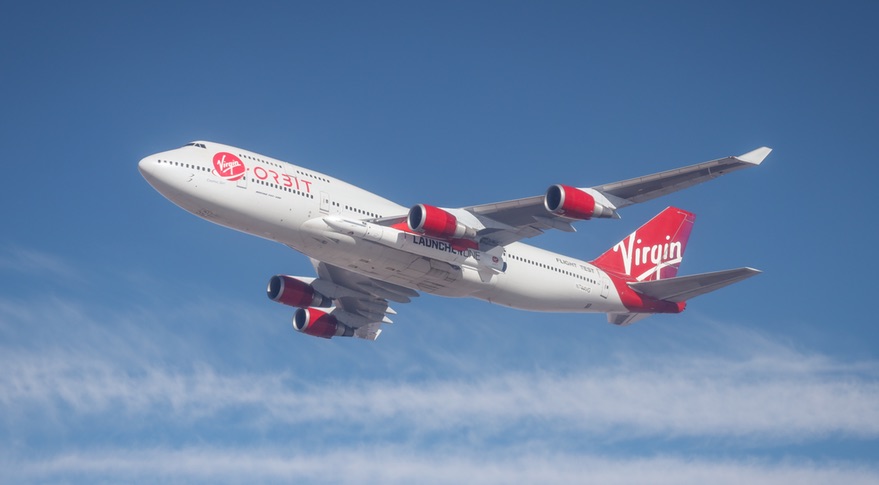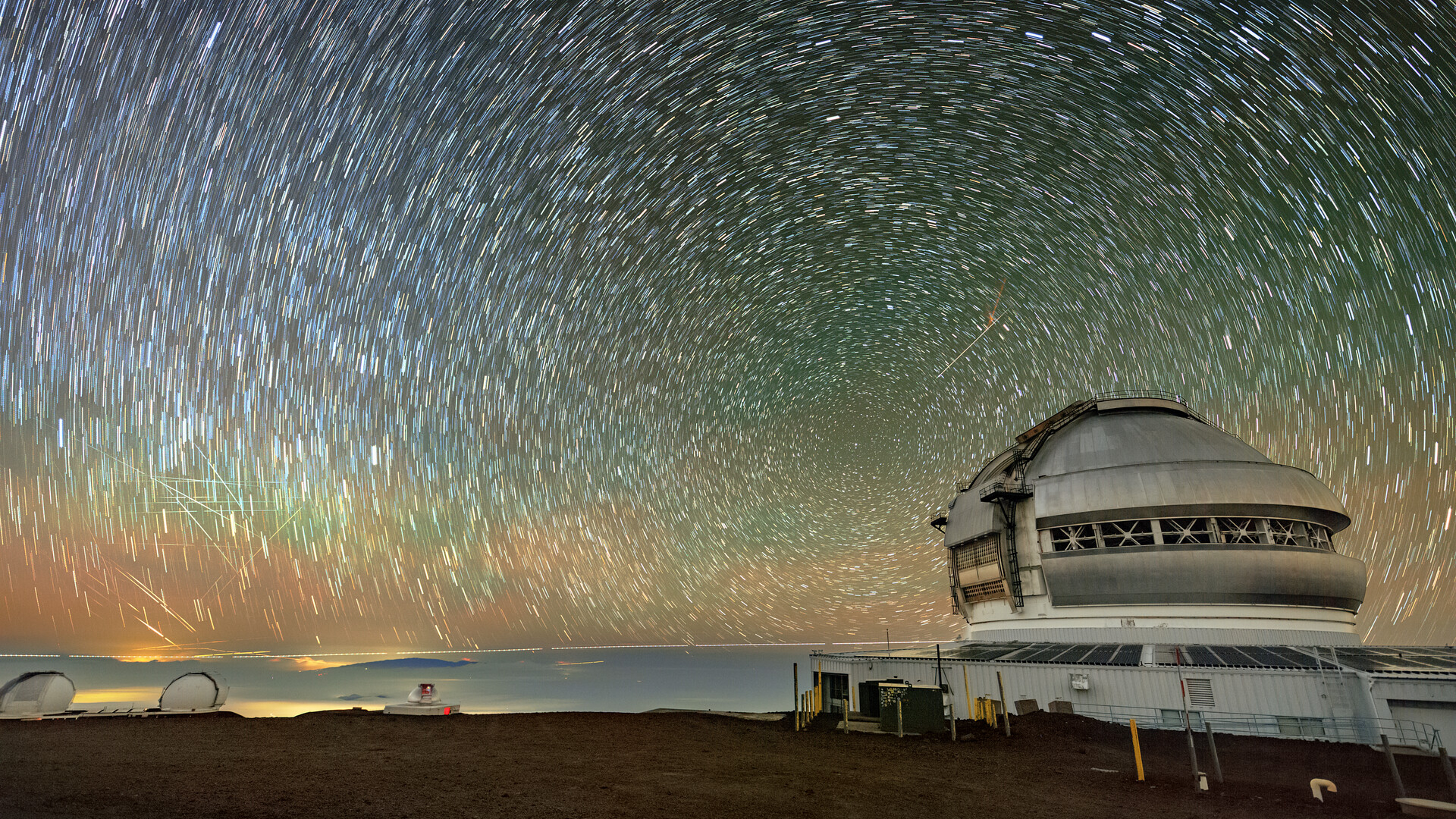Virgin Orbit Performs First Captive-Carry Flight

WASHINGTON — Virgin Orbit performed the first captive-carry flight of its LauncherOne air-launch system Nov. 18, a key testing milestone as the company moves closer to a first flight.
The company's "Cosmic Girl" aircraft, a Boeing 747 with a pylon added to its left wing to which the LauncherOne rocket attaches, took off from the Southern California Logistics Airport in Victorville, California, shortly after 2 p.m. Eastern, according to flight tracking services. It landed back at the airport 80 minutes later after flying above the high desert region of Southern California, including passing over the Mojave Air and Space Port.
The flight tracking data didn't specify if the plane was carrying a LauncherOne rocket, but one eyewitness posted video of the plane taking off from the Victorville airport with a rocket attached. A company spokesperson confirmed later Nov. 18 that this was a captive-carry flight, the first for Virgin Orbit. [Gallery: Virgin Orbit's LauncherOne Rocket for Satellite Missions]
The test was "a picture-perfect flight, and a major step forward in our quest to bring a new capability to small satellite launch," said Dan Hart, chief executive of Virgin Orbit, in a later statement. "There's still important work to do, but I know our team and our customers were all thrilled to see us taking this important step forward."
"The vehicles flew like a dream today," said Virgin Orbit Chief Pilot Kelly Latimer in the statement. "Everyone on the flight crew and all of our colleagues on the ground were extremely happy with the data we saw from the instruments onboard the aircraft, in the pylon and on the rocket itself. From my perspective in the cockpit, the vehicles handled incredibly well, and perfectly matched what we've trained for in the simulators."
The company had been gearing up for the captive-carry test in recent weeks. In late October, it announced that it had mated a LauncherOne to the plane for the first time. The company last week posted videos of high-speed taxi tests, also performed in Victorville, where the plane and rocket traveled down a runway at speeds of up to 124 mph (200 km/h), simulating an aborted takeoff.
During a captive-carry flight, the rocket remains attached to the plane. Virgin Orbit said in a statement last month that "a number" of such captive-carry flights are planned, "gathering terabytes of valuable data about aerodynamic performance, structural loading, and more." That captive-carry test program will culminate in a drop test, where the rocket is released in flight from the plane but does not ignite its engine, instead falling to the desert floor.
Breaking space news, the latest updates on rocket launches, skywatching events and more!
Barring any technical setbacks, the drop test will be the final step before the first orbital flight of LauncherOne. The company said last month it had already completed manufacturing of that rocket, with two "fully integrated" rocket stages undergoing static-fire tests in Mojave.
The company said in its statement about the captive carry flight that the first orbital flight was now projected to take place in early 2019, with "multiple trips to orbit in the year ahead." In an interview with CNBC Oct. 9, Richard Branson, founder of the Virgin Group, said he expected the first orbital launch to take place in December or January.
This story was provided by SpaceNews, dedicated to covering all aspects of the space industry.
Join our Space Forums to keep talking space on the latest missions, night sky and more! And if you have a news tip, correction or comment, let us know at: community@space.com.

Jeff Foust is a Senior Staff Writer at SpaceNews, a space industry news magazine and website, where he writes about space policy, commercial spaceflight and other aerospace industry topics. Jeff has a Ph.D. in planetary sciences from the Massachusetts Institute of Technology and earned a bachelor's degree in geophysics and planetary science from the California Institute of Technology. You can see Jeff's latest projects by following him on Twitter.

